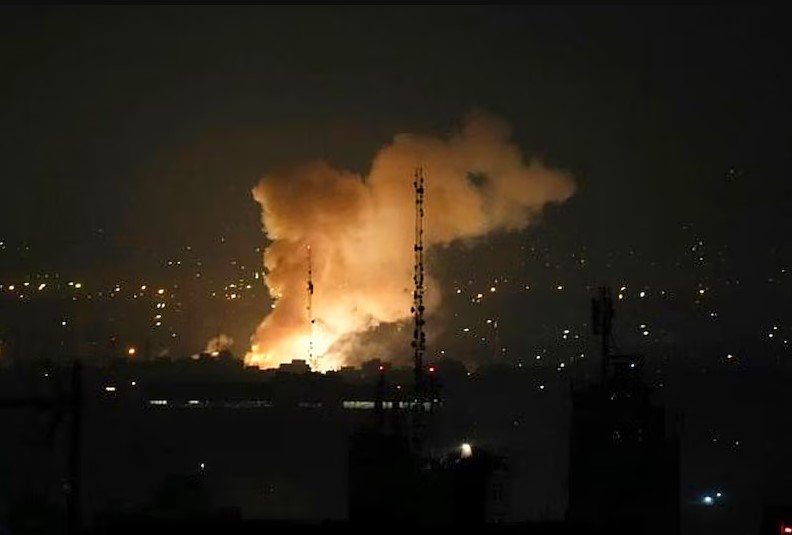Smoke fills the skies, diplomacy hangs by a thread, and the world watches as old tensions boil over once again. G7 leaders have issued a firm call for restraint in the Middle East — but it’s the United States President’s sudden exit that’s raising the most eyebrows.
Explosions Rock Tehran and Israel as Conflict Intensifies
For four straight days, the Middle East has been on fire — literally and politically. Israel and Iran, locked in a dangerous back-and-forth, have exchanged a barrage of missile strikes that’s left cities burning and populations terrified.
In Tehran, massive explosions echoed through the capital on June 16, knocking Iran’s state broadcaster offline. In Israel, missile impacts turned parts of Herzliya into charred wreckage, with reports confirming 11 civilian deaths. Israeli air raids are being described as among the most intense in years.
Just one day later, missiles from Iran streaked across the skies over Tel Aviv. Some were intercepted; others weren’t. One even malfunctioned mid-air in a moment captured in a now-viral photo. The scenes feel hauntingly familiar — but this time, the stakes are even higher.
Israel’s ‘Rising Lion’ Operation Spurs Global Unease
Israel’s sudden and sweeping airstrikes across Iran have caught the world off guard. Branded “Operation Rising Lion,” the campaign is being portrayed by Israeli authorities as a preemptive strike on nuclear and military targets. Among the dead are several high-ranking commanders and nuclear scientists, many of whom had been on Mossad’s radar for years.

Tehran has responded with fury, accusing Israel of launching a full-scale war under the guise of defense. Iran insists its nuclear programme is strictly for civilian purposes, calling Israel’s offensive an act of aggression meant to derail peace efforts and destabilize the region further.
In response, air defense systems have been activated across multiple cities in both countries. Hospitals are overwhelmed. Civilians are scared. And the threat of regional war looms larger than it has in over a decade.
G7 Leaders Plead for De-escalation — But Words Feel Hollow
While missiles rain down in the Middle East, the leaders of the G7 gathered in what was meant to be a symbolic show of unity. Instead, the summit quickly turned into a scramble to respond to what many fear could spiral into full-blown war.
Canada released the G7’s joint statement, which emphasized the need for an immediate ceasefire in Gaza and broader regional de-escalation. Key lines include:
-
“Israel has a right to defend itself.”
-
“The protection of civilians must remain a priority.”
-
“Iran can never have a nuclear weapon.”
But critics say the statement feels cautious, if not toothless. There’s concern that while the G7 supports Israel’s right to defend itself, little is being said about its continued actions in Gaza, where reports of starving populations and bombed hospitals have drawn international outrage.
At the same time, several diplomats noted that the carefully worded statement reflects an impossible balancing act — supporting an ally, condemning Iran’s role, and still calling for peace.
Trump’s Sudden Exit Sends Shockwaves Through the Summit
And then came the twist: Donald Trump, in typical Trump fashion, left early.
Just hours after the G7 released its plea for peace, the U.S. President packed up and left, citing “urgent business” tied to the conflict. “As soon as I leave here, we’re going to be doing something,” he told reporters. No clarification. No elaboration. Just those words — vague and ominous.
This isn’t the first time Trump’s sudden decisions have thrown diplomatic events into chaos. But this departure felt different. Tensions were already running high, and his exit has left other G7 leaders scrambling to understand what Washington’s next move might be.
Some speculate U.S. military action could be on the table. Others believe Trump is racing back to oversee mediation efforts. Either way, his abrupt departure has deepened the uncertainty.
Mounting Civilian Toll Raises Questions of Accountability
Lost in the fog of war and summit press releases are the human stories. The families buried under rubble. The mothers clutching children in underground shelters. The civilians — Israeli and Iranian — who had no hand in military strategy, yet are paying the highest price.
There’s growing anger over what some describe as collective punishment. In Gaza, humanitarian groups say medical supplies have run out in several zones. Iran’s public health agencies are similarly overwhelmed as hospitals fill with missile victims.
This part often gets glossed over in official statements. But behind every missile and policy decision, there are faces, names, and lives being torn apart.
A Fragile Moment That Could Shape the Region’s Future
No one knows what happens next. Will the UN step in with real authority? Will the U.S. push for talks — or something more forceful? Will Israel scale back or double down?
Here’s a quick summary of the current state:
| Event | Date | Details |
|---|---|---|
| Iran strikes Israel | June 14-17 | 11 killed; dozens injured |
| Israel’s ‘Rising Lion’ launched | June 15 | Hit nuclear, military, and residential areas in Tehran |
| Trump exits G7 early | June 17 | “We’re going to be doing something,” says Trump |
| G7 issues statement | June 17 | Urges ceasefire in Gaza and de-escalation with Iran |
The truth is, one wrong move from either side could ignite something no one can control. The region is a powder keg — and the fuse is shorter than ever.
